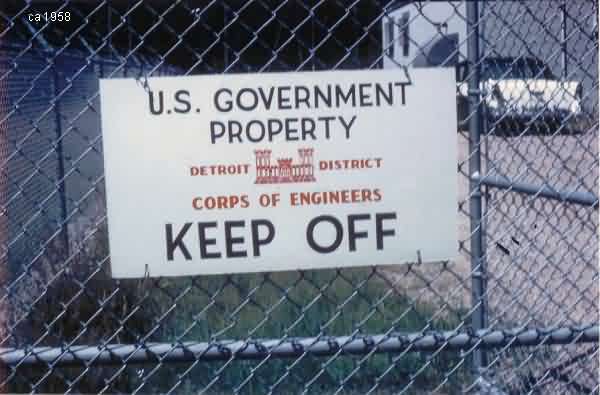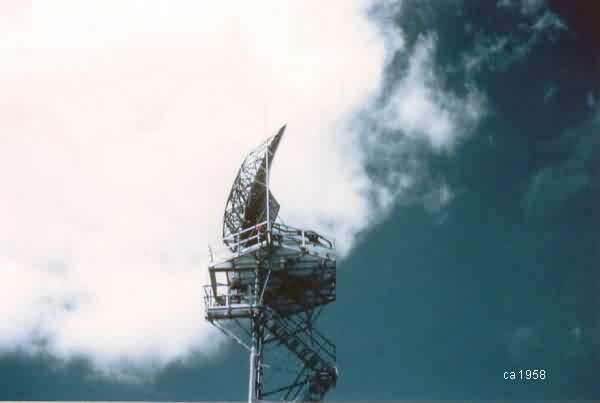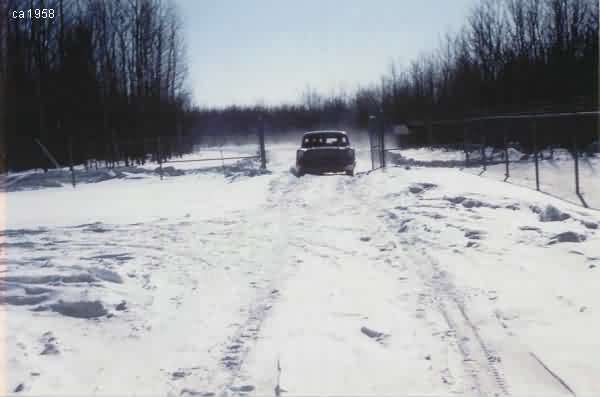

FPS-18 sail waiting to be powered up.

New airmen just out of FPS-3 & 6 school. Getting some OJT on the 18`s sail. If my memory serves me correctly, the Bendix installation team was going through final clearance inspection prior to powering up the antenna. No idea who the airman is.

First snowfall of 1958. Government contracted for snow plowing for their portion of the road from the fire watchtower, which is in the back and to the left of the trees about a quarter to a half-mile. Nothing was plowed from the County road to the fire tower, which used to be a mining camp road. You had to dodge cement footings and old building foundations. Bad enough in the summer when you could see them. A different set of guys is arriving for some OJT as this is my last trip to this site.

Three of the guys who will have the responsibility for keeping P-19A on the air; not sure of their names, however. The one on the left may be Charles Sapcoe from New Hampshire. When I left to go to the 788th, Waverly, Iowa, I managed to talk Chuck into transferring there. He and I spent a great deal of time at the Gap Filler site in La Crescent, MN. After discharge, he went on to work for a civilian contractor for the federal government. (My 1958 Pontiac is in the background of this photo).